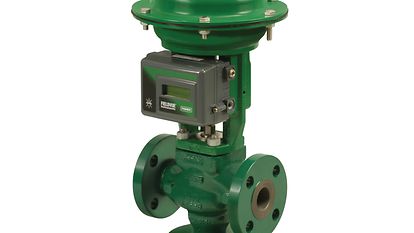Reliable Control Valves: Key Parts for Effective System Monitoring
Reliable Control Valves: Key Parts for Effective System Monitoring
Blog Article

Maximize Power Financial Savings and Convenience With Advanced Building Automation Controls
In the realm of modern-day architecture and facility monitoring, the combination of innovative building automation manages stands as a critical innovation. By harnessing the power of automation, structures can adjust, respond, and progress in ways that were when unimaginable.
Power Performance Perks
Power effectiveness advantages can dramatically reduce energy intake and functional costs in buildings. By carrying out energy-efficient techniques and technologies, building owners and operators can attain significant savings while likewise adding to environmental sustainability. One of the main advantages of boosting energy performance in buildings is the reduction of utility expenses. Energy-efficient systems, such as advanced structure automation controls, can enhance the use of resources like lights, home heating, and cooling, bring about lower power expenditures gradually.
Moreover, improved energy performance can extend the lifespan of structure tools and systems. By running more effectively, a/c systems, lighting components, and various other structure parts experience less damage, leading to decreased upkeep and replacement costs. Furthermore, energy-efficient buildings often command higher residential property worths and rental prices, offering long-term economic advantages to proprietors.
Furthermore, power performance can boost passenger convenience and efficiency. Appropriately controlled indoor atmospheres with ideal illumination and thermal problems produce a more enjoyable and favorable work space, leading to improved employee contentment and efficiency. Generally, the energy efficiency advantages associated with sophisticated building automation controls are multifaceted, including cost savings, environmental stewardship, and occupant wellness.
Enhanced Comfort Control
Enhancing comfort control in structure atmospheres needs a sophisticated combination of sophisticated automation systems for ideal resident health. By using innovative structure automation controls, facilities can tailor the indoor setting to fulfill the particular requirements and preferences of occupants. control valves.
By including these sophisticated controls, structures can not only improve convenience however additionally enhance energy performance by maximizing system procedures based on actual occupancy and usage patterns. Inevitably, focusing on resident comfort with sophisticated automation systems leads to a much more delightful and much healthier interior environment.
Operational Effectiveness Improvements

Moreover, the application of real-time monitoring and analytics devices allows building drivers to identify power inefficiencies and operational abnormalities without delay. By continuously keeping track of energy usage patterns and system performance metrics, adjustments can be made in real-time to maximize power consumption and make certain peak operational performance. control valves. Additionally, including demand reaction strategies into structure automation controls can more info here better improve operational effectiveness by dynamically adjusting energy use based upon grid problems and pricing signals
Indoor Climate Optimization
Efficient indoor climate optimization is an essential facet of structure automation controls, guaranteeing passengers' convenience and health while making best use of energy cost savings. By using innovative sensors and controls, building automation systems can constantly change and monitor temperature, moisture levels, air high quality, and air flow to create an ideal interior environment. Keeping regular and comfy conditions not only boosts occupant satisfaction but also boosts productivity and general health.
Indoor climate optimization likewise plays a crucial role in power performance. By fine-tuning home heating, cooling, and ventilation systems based upon real-time information and occupancy patterns, constructing automation controls can dramatically minimize energy consumption - control valves. Applying methods such as demand-controlled ventilation and thermal zoning can help decrease power waste while making certain that each area of the structure obtains the required conditioning.

Sustainable Atmosphere Production
Building automation regulates not just maximize interior environment problems for energy performance and occupant comfort however likewise lay the structure for developing a lasting atmosphere with critical monitoring of resources and systems. By integrating advanced building automation modern technologies, such as sensing units, actuators, and smart software program, centers can adjust and keep track of energy use in real-time to minimize waste and reduce their carbon footprint. These systems make it possible for anticipating upkeep, identifying potential problems prior to they escalate and optimizing equipment performance to boost long life and efficiency.
Moreover, sustainable setting creation expands past power monitoring to incorporate water preservation, waste decrease, and indoor air quality renovation. Structure automation controls can control water usage, detect leaks, and ensure correct waste disposal methods, adding to general sustainability initiatives. Furthermore, by controlling and checking ventilation and like it purification systems, these technologies boost occupant wellness and productivity while reducing power consumption related to heating and cooling procedures.
Conclusion
Finally, progressed building automation manages offer substantial benefits in regards to energy cost savings, convenience control, operational performance, indoor environment optimization, and producing a sustainable atmosphere. By implementing these controls, buildings can achieve ideal efficiency while decreasing energy my site intake and improving resident convenience. It is evident that using sophisticated automation modern technology is important in boosting building performance and creating a much more lasting future.
Energy efficiency benefits can dramatically reduce energy usage and functional prices in buildings. In general, the power effectiveness benefits associated with sophisticated structure automation controls are multifaceted, including expense savings, ecological stewardship, and occupant wellness.
Furthermore, integrating need reaction methods right into building automation controls can better improve operational effectiveness by dynamically readjusting power use based on grid problems and prices signals.
Structure automation manages not only optimize indoor environment conditions for energy efficiency and resident comfort however likewise lay the structure for creating a sustainable environment with strategic monitoring of resources and systems.In verdict, progressed building automation regulates offer significant advantages in terms of energy financial savings, comfort control, functional effectiveness, interior climate optimization, and developing a sustainable setting.
Report this page